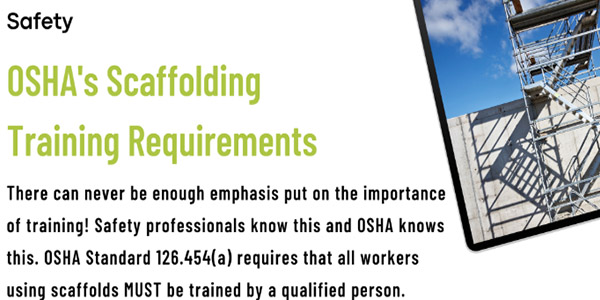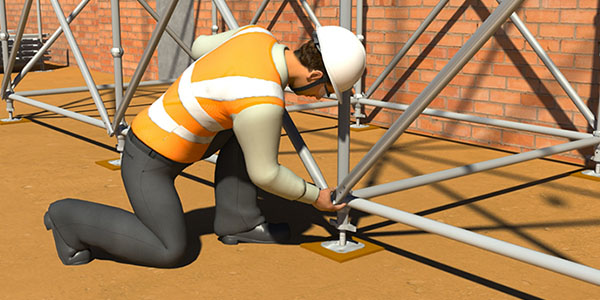Essential Rules for Scaffold Safety: Who Is Authorized to Inspect a Scaffold
Mar 31, 2025Scaffolding is a critical component of construction and maintenance work, but it can also be hazardous if not properly inspected and maintained. Proper inspection of scaffolding during erection and operation is necessary and required by law. Ensuring worker safety and complying with regulations such as OSHA standards can help prevent jobsite accidents.
In this guide, we will discuss who has the authority to inspect scaffolding and what to look out for when doing so.
Scaffolding is an indispensable temporary facility in construction, decoration and maintenance operations, but its structure is complex and the use environment is changeable. Once a safety hazard occurs, it is very easy to cause a serious accident. Scaffolding inspections are a safety measure required by law and are also the most effective means to prevent accidents such as falls and collapses. The following are the five core reasons why scaffolding inspections must be conducted:
According to OSHA 1926.450(b), only specially qualified personnel are authorized to conduct scaffolding inspections. This is an iron rule to ensure construction safety.
OSHA has three core requirements for qualified personnel:

OSHA does not mandate a specific "scaffolding certification" card or permit. However, it does absolutely require that anyone who inspects, designs, or supervises scaffolding work be a "qualified person" and have received documented training that complies with OSHA standards (29 CFR 1926 Subpart L).

Different countries and regions have different requirements for how often scaffolding should be inspected for safety:
|
Standard |
Initial Inspection |
Routine Frequency |
Special Circumstances |
Record Retention |
|
US OSHA |
Pre-use mandatory |
Before each shift + post extreme weather |
After modifications/impact/overload |
3 years post-project |
|
EU EN 12811 |
Third-party certified |
Weekly minimum |
Winds > Beaufort 8 or <-10°C |
10 years |
|
China GB 51210 |
Supervisor sign-off |
Daily pre-shift |
Post-earthquake/rainfall/7+ days idle |
Permanent archives |
|
ISO 10075 |
Load-test verified |
Every 48 hours |
Material corrosion/deformation |
5 years recommended |
The safety of scaffolding depends on the standardized construction and inspection by certified personnel.
|
Inspection Type |
Who Conducts It? |
When? |
|
Pre-Use Inspection |
Competent Person (OSHA) / Scaffold Supervisor (EU) |
Before first use |
|
Daily/Routine Check |
Competent Person or trained inspector |
Each shift |
|
Post-Event Inspection |
Competent Person (after weather, impacts, or modifications) |
Immediately after incident |
|
Thorough Examination (EU EN 12811) |
Certified Scaffold Inspector (CISRS/Equivalent) |
Every 7 days |
-China
-US/EU
-Special scenarios
Cantilever/overload scaffolding must be signed and confirmed by a structural engineer
Scaffolding inspection is the core link to ensure construction safety, involving multiple responsible parties. The following are the main core responsibilities of the inspector:
-Check the vertical deviation of the pole (≤1/100 height, GB 51210)
-Confirm the torque value of the fastener (ISO standard: 40-65 N·m)
-Evaluate the foundation settlement (allowable value <10mm/24h)
-Guardrail height (upper pole ≥1.05m, middle pole 0.5-0.6m, OSHA 1926.451)
-Kickboard integrity (≥150mm, EN 12811)
-Safety net tension (droop <1m/3m span)
-Document management
-Fill in the electronic/paper inspection form (with GPS positioning and timestamp)
-Green card (passed)
-Yellow card (restricted use)
-Red card (immediate removal)
-Measurement of temperature deformation of steel pipes (expansion coefficient 11×10⁻⁶/℃ when >40℃)
-Checking the pull-out resistance of anchors (increase 50% when wind speed >8)
-Weekly corrosion inspection (ultrasonic thickness gauge, scrapped if wall thickness <3.2mm)
-Anti-static ground resistance test (<10Ω)
-Recheck wheel brake force after displacement (≥1.5 times working load)
-Check the effectiveness of locking device
Scaffolding work environment inspection is a key link to ensure construction safety, and a systematic assessment of natural conditions, site conditions and human factors is required.
-meteorological conditions (real-time wind speed ≤13.8m/s (level 6 wind), precipitation impact <3cm (otherwise suspend work))
-Geological stability (foundation settlement <5mm/8h, ground bearing capacity ≥50kPa (geological report required))
-Electromagnetic environment (high-voltage line distance ≥6m (below 110kV), lightning protection grounding resistance ≤10Ω)
-Chemical pollution (corrosive gas concentration H₂S <10ppm (OSHA limit), metal component corrosion rate annual corrosion amount <0.2mm)
Tools to prepare before inspection
Inspection location
Workers receiving scaffolding safety measures training can reduce the probability of scaffolding accidents.
-Scaffolding load calculation
-Extreme weather response
-Properly wear safety belts (hang high and use low)
-Identify sources of danger (such as corroded fasteners)
-All fasteners are not loose (torque wrench spot check 20%)
-Safety net is not damaged (holes ≤ 50mm)
-Ground resistance ≤ 10Ω (special inspection during thunderstorm season)
-Steel structure weld cracks (penetrant flaw detection)
-Foundation settlement (total station monitoring, change ≤ 5mm/week)
Builders: Must be trained and supervised (OSHA) or certified (EU/UK/AU).
Inspectors: Must be a Competent Person (OSHA) or CISRS certified (EU).
Records: Keep signed inspection logs (3+ years US, 10 years EU).
Complex Scaffolding: Engineer approval required if rated load >125% or unusual design.
Only a “qualified person” (as defined by OSHA) or a certified scaffolding inspector is authorized to inspect scaffolds.
No, OSHA does not issue specific “scaffolding certifications,” but inspectors must:• Be trained in accordance with OSHA 1926.454• Demonstrate competency through documented training (e.g., OSHA 30-hour construction)• Be formally appointed by their employerException: Some states (e.g., California) require additional certification.
Scaffold Roles and Responsibilities -Princeton EHS —— Princeton University
Scaffold Inspection: What You Need to Know —— Essential Site Skills